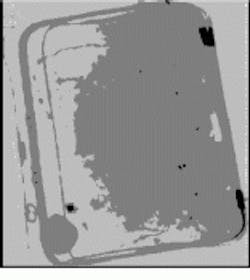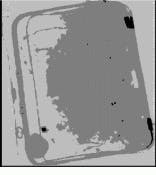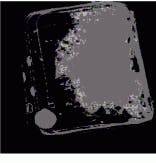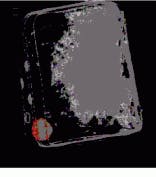Fuzzy logic detects explosives
Fuzzy logic detects explosives
ecurity detection equipment currently used in airports is based on a proven and reliable technology--the x-ray machine. Unfortunately, today`s x-ray technology has only a limited capability to detect explosives. Even dual-beam, dual-energy systems cannot detect some types of explosives. Indeed, inspection systems now in use are almost totally reliant on the training, skill, and interest of the human operator.
To automate this inspection process, InnerScan Security Systems (O`Fallon, MO) has adopted image-processing technology from Bio Computer Research (BCR; Trion, GA), which was originally developed for detecting prostate cancer using ultrasound images. "Using fuzzy logic, the image-processing technique developed by BCR can detect areas as small as 0.05 mm, a significant increase in sensitivity from the lower limit of 7 mm detected by other technologies," claims James O. Gouge, the inventor of the technique and cofounder of BCR.
To evaluate the potential of BCR`s technology in airline-security applications, InnerScan performed several tests using sample x-ray images of typical carry-on and checked baggage provided by an x-ray security equipment manufacturer. First, diffusion-induced scatter characteristics of all the materials in the image were analyzed. Nonsuspect or known materials were eliminated, and then anomalous materials were identified and categorized by the specific, unique, and quantifiable characteristics exhibited. This information was then added to the system`s knowledge base in a learning mode.
When the inspection system was placed in search and acquisition mode during the evaluation of subsequent images, the derived information was then referenced as each new image was processed to identify any hazardous materials. The imaging system performed with 100% accuracy--it identified all of the hazardous materials within the images using only one training image.
According to InnerScan, the inspection system has the capability to detect very small areas of material (4 to 5 mm2) regardless of their shape on x-ray images. In addition, it can detect small amounts of suspect materials that are less than eight pixels wide; these material amounts currently go undetected. More important, the inspection system can recognize any compound, device, or material for which it has been trained, regardless of the environment.
-Andrew Wilson
To train the hazardous-material-inspection system in "learning" mode (top), diffusion and scattering characteristics of all materials in the image are initially compared. Then, known or nonsuspect materials are eliminated from the potential threat material(s). Anomalous or unknown material is then studied and categorized (middle). Once the system has been taught in "learning" mode, the inspection image is enhanced for improved overall material resolution (bottom). Through an elimination process, anomalous or potential threat materials are identified and categorized. This information is then added to the inspection system`s knowledge base. Anomalous material is then colorized for ease in identification.



